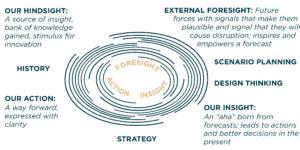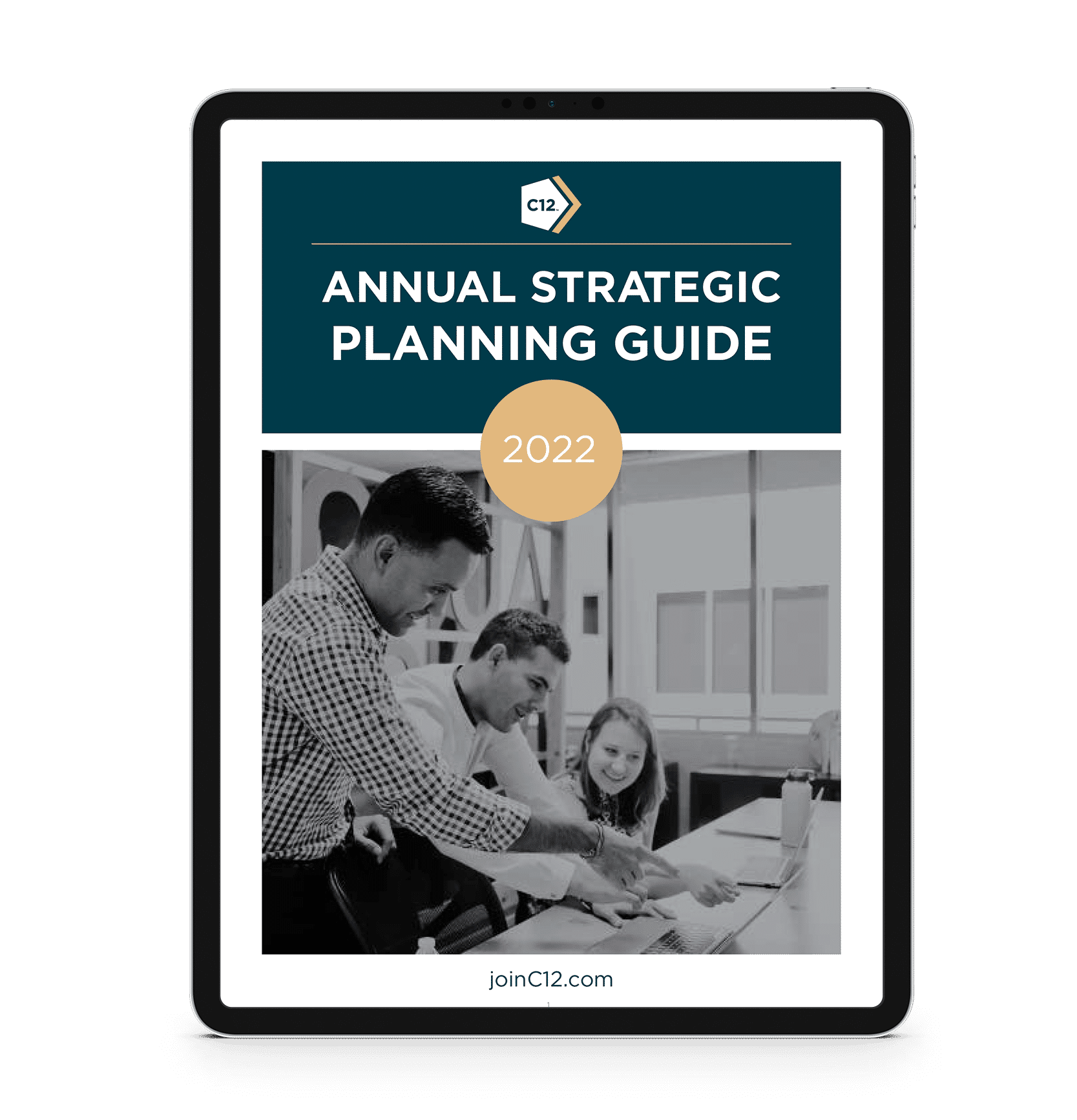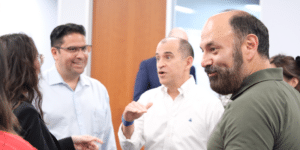Why Looking Back from the Future Matters in Strategic Planning
“The futility of finding a risk-free place to stand has paralyzed many of us… There are so many unknowns. The temptation is to run away… Just think about something else. Put it off. Procrastinate. Hope the problem goes away. But it doesn’t… The paralyzing fear of making a decision serves no one. It is cowardly. Risk is the only way forward.”
John Piper, Risk Is Right
We have witnessed the downfall of companies like Kodak and Blockbuster that didn’t look far enough into the future, take seriously the reality of an evolving world, or make decisions according to the expected direction of the industry. We must learn from their mistakes. We can’t predict all things, like the economic situation or new regulations. Only God knows what the future holds. But we can make calculated inferences about the future by considering multiple time horizons, studying trends, leveraging resources, projecting certain scenarios, and applying experienced-based reason.
Futurist (n.)
one who studies and predicts the future especially on the basis of current trends
When scenario planning, many leaders tend to start from today’s world and work out gradually as far as they can toward the future. This is a short-sighted approach that looks at trends or shifts in behaviors, making it hard to get a clear view of what’s going on or where things are going. Bob Johansen, a fellow of the Institute for the Future (IFTF), suggests a different, counterintuitive approach: leaders should leap ahead to look from 10 or more years out and then work backward to identify opportunities today.

While particulars over the next 1–5 years might be hazy, Johansen says meta themes are more apparent for the next 10–20 years. As such, a futures perspective looks at least 10 years ahead at external forces likely to disrupt a particular organization.
Develop Clarity, Moderate Certainty
The IFTF uses global forecasts, custom research, and foresight training to help organizations navigate complex change and develop world-ready strategies. They liken futures research to earthquake forecasting. Earthquakes are inevitable—but also unpredictable. With abundant historical data to reference, engineers can identify safe zones and design buildings that can withstand tremors. Similarly, the future is unpredictable. Even if the overall direction of change is forecast accurately, the future can unfold in unexpected ways. Readiness disciplines and resilience practices can inform how we prepare. The goal is to be clear about where we are going, the purpose is to come up with a clear way forward, and the key is to remain flexible.
Foresight to Insight to Action Cycle
The next decade promises to deliver many dilemmas (which, unlike problems, cannot be solved). Looking backward from the future increases our ability to turn dilemmas into advantages and opportunities.
Leaders who have the literacy of looking backward from the future can say:
– I can see long-term patterns of change 10 years ahead, beyond the noise of the present.
– I bring a futures perspective to every conversation.
– I believe that a futures perspective makes better decisions in the present more likely.
– I develop my clarity but moderate my certainty.
(See Leaders Make the Future: Ten New Leadership Skills for an Uncertain World for the 10 skills Johansen suggests leaders need to thrive in the future.)
To consider the next year alone is short-sighted. Prudent leaders should be looking at the next 5–10 years (e.g., technology, increasing data, and interconnection). Don’t get paralyzed by not knowing how to set a five-year plan. Think 10–20 years out, where the world is headed, and what our company needs to be capable of doing—and the short-term future will become more clear.
As you evaluate businesses and the vision for your company, consider these questions:
- What are the most strategic objectives to pursue next?
- In light of the current supply chain, talent, transportation, and workforce dynamics that affect our businesses, suppliers, and community, what pivots are required of us?
- What is changing about your market, suppliers, and customers that you should take into consideration?
- Which part of the business will be most disrupted or will have to scale up most significantly?
Have you downloaded our annual Strategic Planning Guide? Enter 2022 with a solid plan your whole team is aligned on and motivated to propel forward.
November 16, 2021







